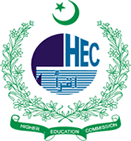IMPACT OF WHOLE-BODY ELECTROMYOSTIMULATION AND RESISTANCE TRAINING ON BONE MINERAL DENSITY IN WOMEN AT RISK OF OSTEOPOROSIS
DOI:
https://doi.org/10.51846/the-sky.v0i0.2075Keywords:
ageing,, bone mineral density,, BMD, osteoporosis,, DXA,, resistance training,, WB-EMSAbstract
In recent years, there has been an increasing interest in physical activity programs for older adults. Questions have been raised about the efficacy of programs regarding real effects on life. The purpose of the study is to compare the impact of ten weeks of Whole-Body Electromyostimulation (WB-EMS) and resistance training (RT) programs on one mineral density (BMD) and T-score values in women at risk of osteoporosis. The WB-EMS was carried out once per week (total: ten sessions), the RT was carried out twice per week (total: 20 sessions). Twenty-eight elderly women participated in the study, nine in a WB-EMS group (weight: 69.84±10.29kg; BMI: 25.04±4.18 kg/m2), eight in a RT group (weight: 74.16±4.19kg; BMI: 27.35±2.76 kg/m2), and ten in a control group (CG) (weight: 79.72±15.61kg kg; BMI 28.58±5.70 kg/m2). A dual-energy X-ray absorptiometry scanner (DXA) was used to assess body composition, BMD, and T-score values. To identify the statistical significance of the differences between pre-test and post-test in all groups, the parametric t-test was used. Statistical significance was set at p ≤ 0.05. Although no significant differences were found in either BMD or T-score values, the study appeared to elicit some positive behaviour that could have an impact for more than ten weeks. The present study was designed to determine the effect of RT and WB-EMS on selected parameters in groups of women at risk of osteoporosis. Even though the results were not statistically significant, we consider the impact of programs on the level of BMD and T-score beneficial. Results show that the RT method is more practical. More tested subjects of the RT reported the same or higher level of BMD in the post-test compared to the WB-EMS method (RT 50% vs WB-EMS 44.7%). It was impossible to further investigate the significant relationships between selected parameters and intervention because the sample size was too small. Therefore, a further study with more focus on the duration of intervention and an increase in sample size is suggested.
Downloads
Published
How to Cite
Issue
Section
License
COPYRIGHT POLICY
UOL journals follow an open-access publishing policy and full text of all articles is available free, immediately upon acceptance. Articles are published and distributed under the terms of the CC BY-SA 4.0 International License. Thus, work submitted to UOL Journals implies that it is original, unpublished work of the authors; neither published previously nor accepted/under consideration for publication elsewhere.
Authors will be responsible for any information written/informed/reported in the submitted manuscript. Although we do not require authors to submit the data collection documents and coded sheets used to do quantitative or qualitative analysis, we may request it at any time during the publication process, including after the article has been published. It is author's responsibility to obtain signed permission from the copyright holder to use and reproduce text, illustrations, tables, etc., published previously in other journals, electronic or print media.
Conflict of interest statements will be published at the end of the article. If no conflict of interest exists, the following sentence will be used: "The authors declare no conflict of interest." Authors are required to disclose any sponsorship or funding received from any institution relating to their research. The editor(s) will determine what disclosures, if any, should be available to the readers.
Authors are not permitted to post the work on any website/blog/forum/board or at any other place, by any means, from the time such work is submitted to UOL journals until the final decision on the paper has been given to them. In case a paper is accepted for publication, the authors may not post the work in its entirety on any website/blog/forum/board or at any other place, by any means, till the paper is published in UOL Journals.
The authors may, however, post the title, authors’ names and their affiliations and abstract, with the following statement on the first page of the paper - "The manuscript has been accepted for publication in UOL Journals". After publication of the article, it may be posted anywhere with full journal citation included.
All articles published in UOL journals are open-access articles, published and distributed under the terms of the Creative Commons Attribution-ShareAlike 4.0 International License which permits remixing, transformation, or building upon the material, provided the original work is appropriately cited mentioning the authors and the publisher, as well as the produced work is distributed under the same license as the original.
In the future, UOL may reproduce printed copies of articles in any form. Without prejudice to the terms of the license given below, we retain the right to reproduce author's articles in this way.
Brief Summary Of The License Agreement
By submitting your research article(s) to UOL Journal(s), you agree to Creative Commons Attribution-ShareAlike 4.0 International License which states that:
Anyone is free:
o To copy and redistribute the material in any medium or format
o To remix, transform, or build upon the material for any purpose, even commercially
Provided:
o The author and the publisher have been appropriately credited
o The link to license is provided
o Indicated if any changes were made
o The material produced is distributed under the same license as the original







